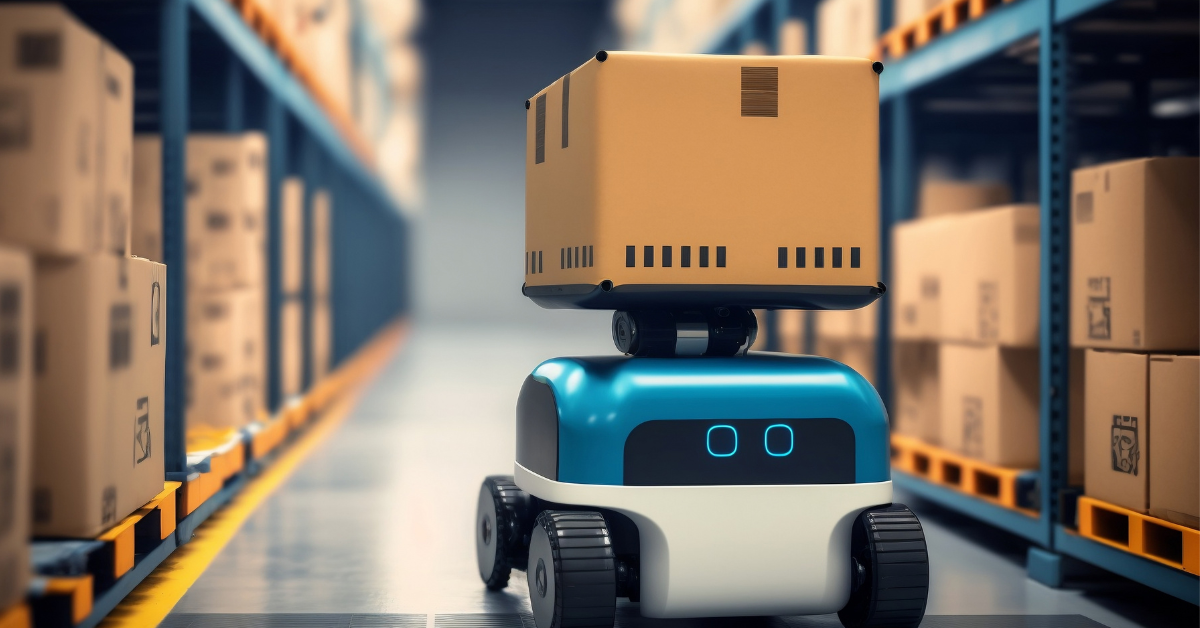


Is it time to automate your warehouse fulfillment operation?
Robotics and automation enhance warehouse operations by boosting efficiency. Various company departments bring unique perspectives and expertise to the table that can influence the decision to implement automation tools and platforms.
Return on Investment (ROI) is typically the primary consideration for any investment decision examined by the Chief Financial Officer (CFO). But it’s important to approach the decision more broadly to create the best ROI.
The CFO is often responsible for evaluating the financial viability of implementing warehouse robotics. When weighing whether or not to invest in technology, the CFO considers the costs associated with the purchase, installation, operations and maintenance. The CFO also looks at the potential benefits and risks of robotic implementation. In the cloud era we’re in, the CFO simply can’t overlook the option of robots as a service (RaaS) and software as a service (SaaS), which offer cost savings, reduced risk and minimized commitment since they are subscription-based. The as-and-service model provides unique opportunities for a company to implement automation and robots at scale, or start small and grow as needed. Another advantage is that since RaaS and SaaS are rented, software maintenance and updates are provided by the vendor.
The Chief Technology Officer (CTO) evaluates the technical requirements of implementing robotics. This involves ensuring the technology is compatible with existing systems and aligns with the company’s strategy. The CTO, who’s the primary influencer when a complete technology overhaul is imminent, assesses the scalability of the technology and its potential for future growth – a job that’s especially salient when it comes to RaaS and SaaS services, including automation platforms and the robots that run on them.
Information technology (IT), which usually falls under the office of the CTO, plays a crucial role in the day-to-day management of robotic systems. IT implements and maintains the systems, ensuring that they integrate seamlessly with the existing technology infrastructure. What’s more, IT provides ongoing technical support to ensure the continued success of robotic systems based on set business rules and service level agreements.
The Chief Supply Chain Officer (CSCO) is playing an increasingly critical role in the automation decision-making process because of the big impact robotics have on the critical last mile of the supply chain. The CSCO evaluates the impact on inventory management, logistics and transportation and ensures that robotics enhance the overall efficiency and effectiveness of the supply continuum. Additionally, the CSCO oversees day-to-day operations of the warehouse, leading training programs for warehouse operators and engineers on-site.
First, automation is about efficiency. But environmental, sustainability and governance (ESG) has grown from an optional or “nice to have” component of the business strategy of large companies into an essential part. As a result, the Chief Sustainability Officer (CSO) plays a key role in making the decision to implement robotics that stands to enhance the fulfillment operation’s carbon footprint and lower its environmental impact. The CSO evaluates the environmental impact of the technology and ensures that the company is in line with its sustainability goals and targets. Energy consumption and battery recyclability and disposability are other factors considered.
For years c-suite executives have put together strategic plans with strong business cases for digital transformation. They cite reasons such as modernization, speed and cost efficiency. But to win in today’s environment, organizations must take a more holistic approach involving a broader array of perspectives. The CFO examines ROI, the CTO provides technical insights into a given robotic solution, and the CSCO scrutinizes warehouse operational requirements and constraints. But no single entity owns the robotics decision; it’s important to seek out different perspectives and integrate them into the final decision. Here’s a thought: To fully understand the value of automation and robots, maybe it’s time to add a Chief Robotics Officer (CRO) to the team.